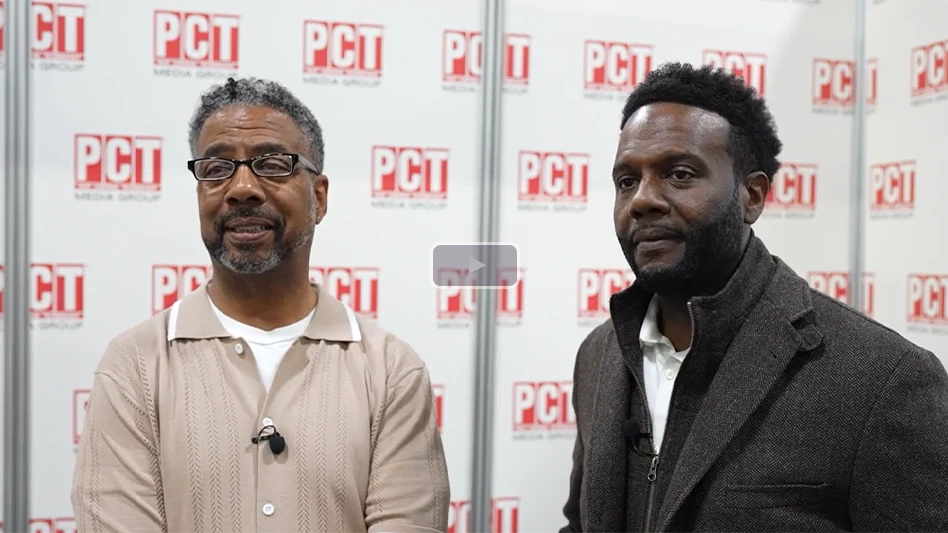Is your business a finely tuned machine or is it lethargic? Here are recommendations for increasing your company’s profitability by improving routing.
Are your profits as high as they should be? If not, there are several solutions you may be able to work on to increase your profits. One possible problem you may be having is poor routing.
Routing affects both revenue and expenses and the idea of selling time is important. The savvy pest management professional understands that he performs pest management but sells time. Time is perishable and must be sold before it is lost. The easiest comparison would be to selling fruit. Fruit must be sold quickly or it will rot and become worthless.
Understanding this concept we can conclude that every action performed that makes more efficient use of time will provide higher profits. The single largest expense for a pest control company is labor. Pest control companies, for the most part, compensate their technicians one of two ways, or by a combination of both:
1. Technicians are paid an hourly rate. This rate climbs by 50 percent (overtime) after the technician works 40 hours in any given week; and/or,
2. Technicians are compensated as a percentage of their route or as a percentage of the dollar value of the jobs that they complete.
Having said this, if your objective is to increase profitability, we need to fit more work into less time. But that doesn’t mean you provide lower-quality services to your customers. What it does mean is that PCOs have to look to improve their efficiency. Efficiency increases profitability in two ways:
1. For technicians who are compensated using an hourly rate, fitting more work into less time increases profitability by increasing total dollars of profit.
Example 1: Let’s say we have a technician who earns $15 per hour. Further, let’s say that he can complete one job in an hour that produces $50. In this case our labor percentage is 30 percent (15/50 = .3). This means for every $100 of revenue we have a profit of $70 (ignoring all other costs).
Example 2: Let’s say we have a technician who earns $15 per hour. Further, let’s say that he can complete two jobs in an hour that produce $50 each or $100 total. In this case our labor percentage is 15 percent (15/100 = .15). This means for every $100 of revenue we have a profit of $85 (ignoring all other costs).
In this example, the pest control company has increased its profit by $50 per hour by fitting more work into one hour. Here we have increased our revenue in dollars and decreased our labor expense as a percentage of revenue.
2. With our technicians who are compensated as a percentage of their route or as a percentage of the dollar value of the jobs that they complete, fitting more work into less time also increases profitability by increasing total dollars of profit.
Example 1: Let’s say we have a technician who earns 25 percent of dollars produced. Further, let’s say that he can complete one job in an hour that produces $50. In this case our profit is $37.50 ($50 – (25 percent x $50) = $37.50) (ignoring all other costs).
Example 2: Let’s say we have a technician who earns 25 percent of dollars produced. Further, let’s say that he can complete two jobs in an hour that produces $50. In this case our profit is $75 [($50 x 2) – (25 percent x $100)] = $25) (ignoring all other costs).
By fitting more work into one hour we have increased our profit by $37.50 per hour from $37.50 to $75. In this case we increased the revenue by $50 per hour while holding our labor expense constant as a percentage of revenue at 25 percent.
In a nutshell, the above examples demonstrate the simplicity of our business model. This is not to say that servicing customers in the pest management business is a simple business. It is to say that the business model under which we operate is simple. It is our time that we sell! Therefore, in managing our operation, the most important item becomes managing time efficiently.
UTILIZATION. One of the most important benchmarks in judging how efficient your routing is what I call utilization. Utilization is a calculation that CPAs and law firms use to see how productive their accountants and lawyers are at billing their time. However, this calculation fits our industry perfectly.
EXAMPLE. Let’s say that your technician spent 30 hours at various jobs doing actual work for a one-week period. Let’s also assume that according to his time card he was punched in and paid for 50 hours. His utilization would be 60 percent (30 hours worked / 50 hours clocked in).
This means that he was producing revenue 60 percent of the time he was clocked in. Where is the rest of his time? Travel, lunch, goofing off? Actually, 60 percent is a decent utilization percentage, providing you are getting a reasonable dollar per hour for your work.
Let’s say your average dollar per hour on your accounts for the day is $75. With a 60 percent utilization you’re actually taking in $45 per hour. If your technician clocks in 8 hours for the day, he will produce $360 for the day ($75 x 60 percent x 8 hours).
If his utilization is 75 percent he will bring in $450 ($75 x 75 percent x 8 hours). If he is 40 percent utilized he will bring in $240 ($75 x 40 percent x 8 hours). These numbers are using the same $75 per hour but varying the utilization percentage.
This point illustrates the fact that there are two ways of increasing daily revenue:
1) Raising your prices (dollars per hour). This is not always feasible.
2) Increasing your utilization by making your routing more efficient.
Is utilization a theoretical calculation that you really can’t measure? Absolutely not! There are three steps to calculating utilization:
1) Make your technicians record the time in and time out on each service ticket. Calculate the total number of hours recorded on all service tickets for a given day serviced by a given technician.
2) Get the number of clocked hours for the day from the technician’s time card or time sheet.
3) Calculate the utilization percentage.
Utilization provides an important method of bench marking your routing efforts. In addition, it is an effective tool in rating technician efficiency. However you should be careful when rating technicians against each other as poor routing may be beyond a technician’s control. Also, in certain instances, low utilization may be necessary, such as times when you are building a new territory.
CONCLUSION. There are two methods to increase your profits: increase revenues or decrease expenses. Those are the only two methods!
Being in a service business we do not sell a product. Our product is our people. Therefore, if we try to save money on our product line by offering a less competitive salary and benefits package, we will attract an inferior work force and ultimately provide inferior service.
If we can’t save money by cutting salary expenses we can only add to the bottom line by becoming more efficient. By routing your technicians in a more productive manner you can actually increase your revenue (per hour) and decrease your expenses (labor as a percentage of revenue).
In order to implement this strategy you will need a bench mark to measure the effectiveness of your efforts. This bench mark will be utilization. It should be calculated on a daily basis and discussed with your technicians and office people as part of an overall strategy to increase the profitability of your firm.
The author is a CPA and owner of PC Opportunities, a consulting firm, Budd Lake, N.J. He has spent more than 12 years as an accountant and CFO in the pest control industry. He can be reached at dgordon@pctonline.com.

Explore the February 2001 Issue
Check out more from this issue and find your next story to read.
Latest from Pest Control Technology
- Envu Announces Lichtenstein as Chairman of Board of Directors
- Spider Expertise, Cockroach Species, AI Tools for Disease Transmission Hot Topics at Purdue Conference
- Rose Pest Solution Promotes Kandler to District Manager of Columbus (OH) Office
- Webinar: Maximizing Cash Flow — Key Strategies for Business Growth
- WorkWave Announces Wavelytics
- Rising Rat Populations Linked to Warming Temperatures, Urban Growth, Study Finds
- How Might the 2024 Elections Impact PCOs
- Keeping Track of Termite Identification





